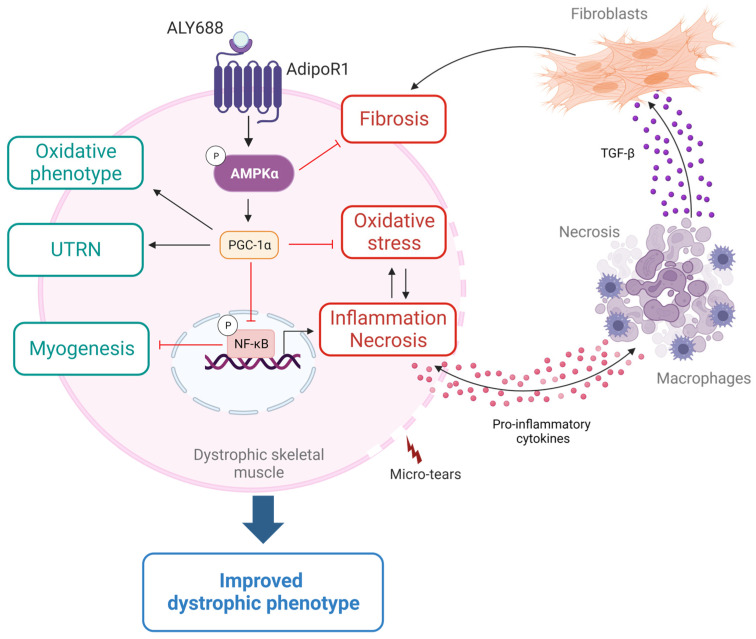Figure 11.
Proposed model for the effects of ALY688 in DMD. This figure summarises the effects and the mechanism of action of ALY688 on the dystrophic skeletal muscle, which is characterised by micro-tears in the sarcolemma due to lack of dystrophin protein. Briefly, binding of ALY688 to AdipoR1 will activate AMPK-PGC-1α pathway. Then, PGC-1α represses NF-κB activity resulting in a reduction in inflammation and necrosis, as well as in an improved myogenic program. In addition, the activation of the AMPK-PGC-1α axis will help mediate several effects of ALY688. First, increased muscle oxidative capacity and function. Second, increased expression and production of utrophin (UTRN) and reduced oxidative stress, which would protect the dystrophic muscle. Third, marked decrease in TGF-β levels and signalling pathways, either directly or indirectly by reducing inflammation, and subsequently blunted muscle fibrosis. These beneficial and protective properties will thus lead to an improved dystrophic phenotype. All these effects have been demonstrated on skeletal muscle from mdx mice and/or confirmed in human DMD myotubes. Pointed head black arrows indicate activation or induction, while blunt head red arrows indicate inhibition. Boxes with processes in green represent net beneficial effects of ALY688, while boxes with processes in red represent deleterious factors inhibited by ALY688. Created with BioRender.com.

